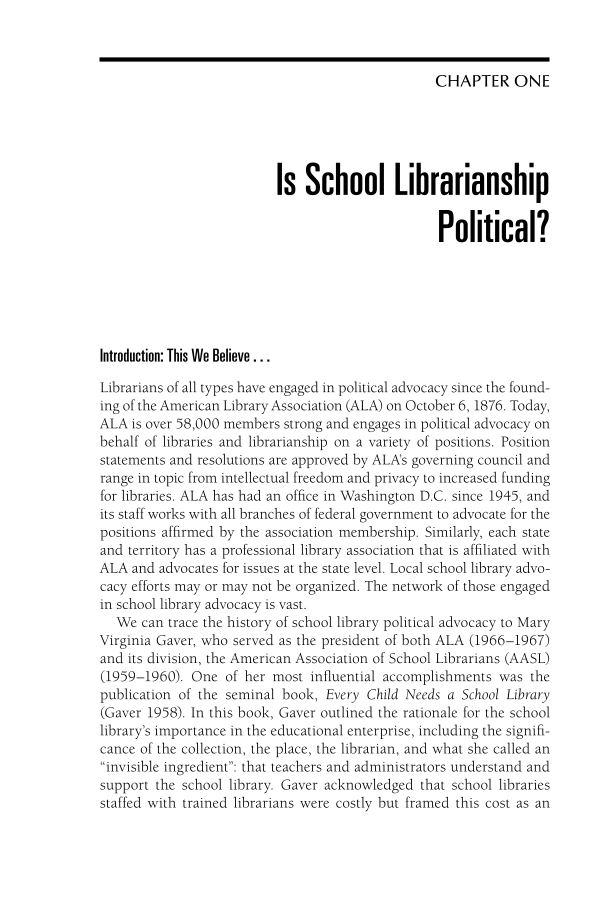CHAPTER ONE Is School Librarianship Political? Introduction: This We Believe . . . Librarians of all types have engaged in political advocacy since the found- ing of the American Library Association (ALA) on October 6, 1876. Today, ALA is over 58,000 members strong and engages in political advocacy on behalf of libraries and librarianship on a variety of positions. Position statements and resolutions are approved by ALA’s governing council and range in topic from intellectual freedom and privacy to increased funding for libraries. ALA has had an offi ce in Washington D.C. since 1945, and its staff works with all branches of federal government to advocate for the positions affi rmed by the association membership. Similarly, each state and territory has a professional library association that is affi liated with ALA and advocates for issues at the state level. Local school library advo- cacy efforts may or may not be organized. The network of those engaged in school library advocacy is vast. We can trace the history of school library political advocacy to Mary Virginia Gaver, who served as the president of both ALA (1966–1967) and its division, the American Association of School Librarians (AASL) (1959–1960). One of her most infl uential accomplishments was the publication of the seminal book, Every Child Needs a School Library (Gaver 1958). In this book, Gaver outlined the rationale for the school library’s importance in the educational enterprise, including the signifi - cance of the collection, the place, the librarian, and what she called an “invisible ingredient”: that teachers and administrators understand and support the school library. Gaver acknowledged that school libraries staffed with trained librarians were costly but framed this cost as an
Document Details My Account Print multiple pages
Print
You have printed 0 times in the last 24 hours.
Your print count will reset on at .
You may print 0 more time(s) before then.
You may print a maximum of 0 pages at a time.












































































































































